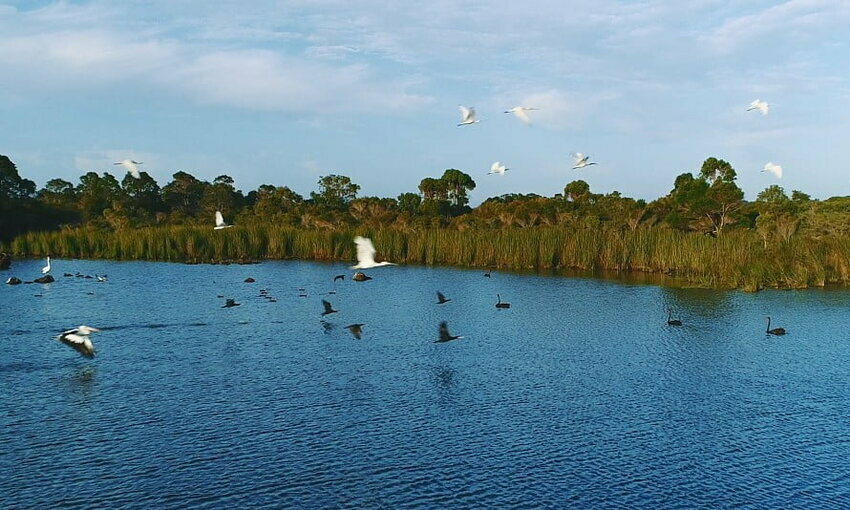 (Credit: BHP)
(Credit: BHP)Natural capital accounting is an evolving tool for governments and corporations to show the relationship between business and the environment, yet little has been studied on what the standards can mean for the mining industry, such as obtaining valuable carbon sequestration, according to a report by Australia’s BHP.
The mining company studied natural capital accounting (NCA) and its potential at its closed and rehabilitated Beenup Mineral Sands site in southwestern Australia and found significant value in restoring the land and protecting its resources. BHP said the estimated natural capital asset value at the site was more than $27 million with nearly 7,000 tons of carbon sequestered annually.
The company said that equaled an increase in natural capital asset value per hectare of approximately 40%. That can equal big value both for the environment and business, as BHP has a goal of having at least 30% of the land and water it operates on under conservation, restoration, or regenerative practices by 2030.
BHP owns, manages, or leases just under 6.5 million hectares of land, of which 2% is for mining, the company said. Most of its land is non-operational and set aside for conservation, and the company said the NCA study is one of the first in the mining industry.
NCA is an environmental accounting framework with the idea that since the environment is important to society and the economy it should be viewed as an asset that should be maintained and managed, according to the United Nations. The UN has established frameworks for natural capital, such as the System of Environmental-Economic Accounting, to allow for natural areas such as forests and waterways to be included in economic reporting.
Natural capital has been seen as an underutilized tool in the international race to net zero. A 2021 report by S&P Global Ratings showed that hypothetically Brazil lost nearly $4 billion to deforestation due to beef production in 2020 and that one way that businesses can be encouraged to make changes is to be charged for ecosystem services.
Mining can be considered an emissions-heavy industry as well. It accounts for up to 7% of the world’s total emissions, according to McKinsey.
The BHP report found that the 40% increase in natural asset value per hectare over the pre-mining scenario was due to restored carbon and wetland components of native ecosystems. Nearly 1 million tons of carbon dioxide equivalent could be stored at the site, most of which took place at natural wetlands. Additionally, the report said the water flow of the Blackwood River was maintained.
“When we look at the case study’s findings we see some expected outcomes from mine rehabilitation activities, such as increases in species and habitat, but also a couple of outcomes that were not part of the original rehabilitation design, such as a net gain in carbon storage and significant improvement in quality of water that flows through the site from local pastoral operations to environmental receptors and communities downstream,” said BHP Vice President Environment Anne Dekker.
“So, the case study has really given us a foundation for considering how we can evolve natural capital accounting concepts for mine sites and sets us up to take the next steps, such as applying them at our operational sites and working with others to apply them within the industry more broadly.”
BHP said there are few precedents for NCA in mining, and that the report is one of the first times the topic has been studied in the industry. The value of mineral resources in NCA standards is not always clear, the according to the company. The study included mineral resources from the Beenup site.
The report said that there are gaps in NCA standards and there should be new approaches that can be specifically geared toward mining companies in assigning natural capital assets. It found that there should be the development of natural capital methods that track all assets across a mining operation’s value chain.
“BHP and other mining companies would benefit from the development of mining-specific criteria to assist in the materiality assessment of dependencies and impacts and the ecosystem services that may be disrupted,” the report said.
BHP said it selected the Beenup site for the case study because it enabled retrospective tracking of different land use scenarios over a period of time as well as its rehabilitation planning with the goal of nature-positive outcomes. The Beenup Case Study was prepared by Syrinx Environmental for BHP and was a collaboration between BHP, CRC TiME, CSIRO, Curtin University, Syrinx Environmental, the University of Western Australia, and the Western Australian Biodiversity Science Institute.